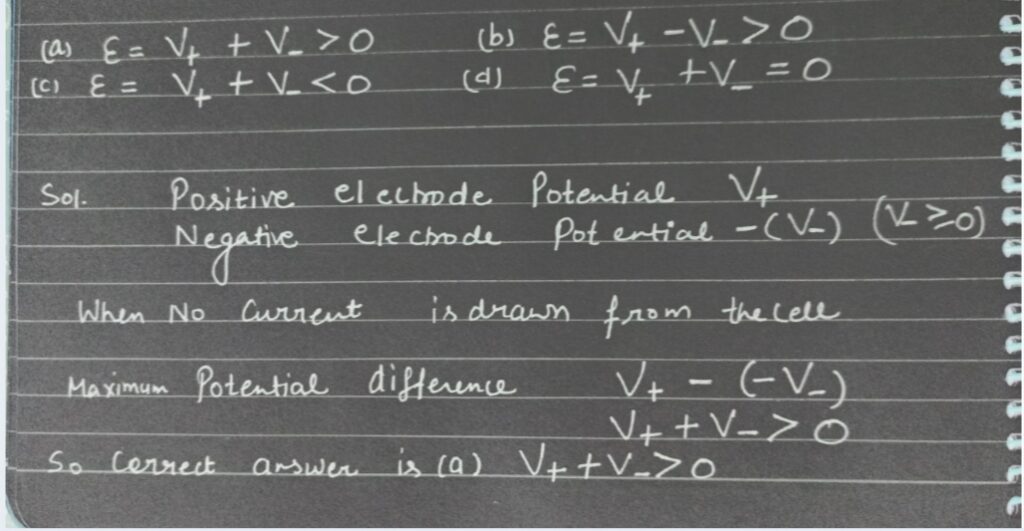When the terminals of a cell are connected to a conductor
When the terminals of a cell are connected to a conductor of resistance R, an electric current flows through the circuit. The electrolyte of the cell also offers some resistance in the path of the current, like the conductor. This resistance offered by the electrolyte is called internal resistance of the cell ( r ). It depends upon the nature of the electrolyte, the area of the electrodes immersed in the electrolyte and the temperature. Due to internal resistance, a part of the energy supplied by the cell is wasted in the form of heat. When no current is drawn from the cell, the potential difference between the two electrodes in known as emf of the cell ( ε ). With a current drawn from the cell, the potential difference between the two electrodes is termed as terminal potential difference (V).
(i) Choose the incorrect statement :
- The potential difference (V) between the two terminals of a cell in a closed circuit is always less than its emf ( ε, during discharge of the cell.
- The internal resistance of a cell decreases with the decrease in temperature of the electrolyte.
- When current is drawn from the cell then V=ε−Ir.
- The graph between potential difference between the two terminals of the cell (V) and the current (I) through it is a straight line with a negative slope
Correct answer (b) The internal resistance of a cell decreases with the decrease in temperature of the electrolyte.
Explanation: this statement is incorrect because internal resistance of a cell decrease with increase in temperature of electrolyte.
(ii) Two cells of emfs 2.0 V & internal Resistance 0.1 Ω & 0.4 Ω respectively, are connected in Parallel. The equivalent emf of the combination will be:
(a) 2.0 V (b) 2.8 V (c) 6.0 V (d) 8.0 V
Ans: (b) 2.8 V

(iii) Dipped in the solution, the electrode exchanges charges with the electrolyte. The Positive electrode develops a Potential V+(V+>0),and negative electrode develops a potential -(V_) (V_>_0), Relative to the electrolyte adjacent to it. When no current is drawn from the cell then:
correct answer(a)

(iv) (a) Five identical cells each of emf 2 Volt and internal resistance 0.1ohm are connected in Parallel. This combination in turn is connected to an external resistor of 9.98 ohm. The Current flowing through the resistor is:
(a) 0.05 A (b)0.1 A (c) 0.15 A (d) 0.2 A

Correct Answer : (d) 0.2 A
Or
(b) Potential difference across a cell in the open circuit is 6 Volt. It becomes 4 V when a current of 2 A is drawn from it. The internal resistance of the cell is:
(a) 1.0 Ohm (b) 1.5 Ohm (c) 2.0 ohm (d) 2.5 ohm
correct Answer :(a) 1.0 ohm